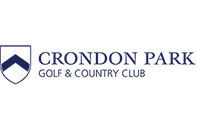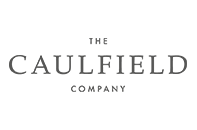How Conversion Rate Optimisation (CRO) Improves Business
SEO and CRO: why the two practices now go hand in hand
We discuss why conversion rate optimisation is now an essential component of any effective SEO campaign.
Conversion rate optimisation – often abbreviated to simply CRO – is defined by Moz.com as “the systematic process of increasing the percentage of website visitors who take a desired action”. If you want your site to be a primary driver of leads, enquiries or direct sales for your business, then chances are you’ll need to invest in some basic CRO to make sure you reach your goals, particularly if you’re facing high competition within your online industry.
What does a CRO expert do?
In order to understand the way in which a potential customer will navigate your website, a CRO specialist will need to analyse your site data to find out what actions are taken during the user journey and, potentially, what’s preventing or discouraging the audience from establishing contact or completing their purchase (depending on what you’re trying to achieve).
Their first port of call will often be Google Analytics. This free service from the search giant will provide them with reams upon reams of information about who’s visiting the site, where they’re coming from, and the elements of the page they’re interacting with.
As KlientBoost puts it, Analytics can deliver a range of reports that can help marketers identify leaks in their sales funnel. For example, they can analyse the performance of particular landing pages by heading to Behavior > Site Content > Landing Pages. This useful part of the software enables them to compare key metrics across pages that receive traffic. The bounce rate is often the best indicator of problems with a particular page – if the bounce rate is high, chances are the users are either not happy with the browsing experience they’re faced with, or the information on the page is not quite what they were looking for. In either case, steps can be taken to improve the page’s usability and content for better results and, ultimately, higher conversions.
Funnel visualisation, presented by the Behavior Flow section, can also be used to help identify weak links in your site’s architecture. The easy-to-follow graphic will quickly help you identify where the most page drop-offs are occurring, and if it’s becoming clear that a particular group of page is under-performing, it’s time to run some experiments and explore possible solutions.
This could involve re-designing the page template, adjusting its content, setting up a split test, or a combination of all three. The key really is to remove all barriers to contact and ensure that the user’s time on your site is as enjoyable and straightforward as possible.
Though Google Analytics is one of the handiest programmes on the planet for marketing professionals, a CRO specialist can also glean qualitative data from other sources, including specially-designed satisfaction surveys.
The exact approach they take will depend on the nature of the business and the data that’s available to them, but the good news is, they have plenty of tools at their disposal to help them identify which part of your website needs fixing!
The main reasons why CRO is becoming more and more vital for SEOs
Unless you’ve been living under a rock for the last 20 or so years, you’ll already know that search engine optimisation (SEO) involves getting new visitors to your website. CRO is now also an important part of the search marketing process because it backs up all of your marketing efforts by establishing what is going to convert users into paying customers.
While improving a platform’s conversion rate may not directly boost SEO, it can lead to better organic rankings because Google now includes UX (user experience), bounce rate and positive customer feedback (reviews) as part of its ranking algorithm. Exploring CRO before or during an SEO campaign will almost definitely improve the return you’re making on your marketing investment. In many cases, the results gleaned from CRO testing and analysis could direct the search strategy, especially as you learn more about the unique requirements of your audience and what they have come to expect from sites like yours.
CRO is a data-driven way of improving performance that is monitored by using pre-defined KPIs, which are universally adored by management and company stakeholders because they are how they are; that is, they provide a solid insight into what the website is bringing to a company, and the progress that is being made on a weekly, monthly and yearly basis. And because so much hinges on your online efforts, guesswork or simply going with a gut feeling is not going to bring you the results you’re looking for.
The team here at Freelance SEO Essex are well-versed in the science of CRO, and would be happy to help you identify weak spots in your current website to improve its overall performance. For more information on our CRO services and how they can benefit your overall marketing strategy, please contact our SEO consultants today!






















